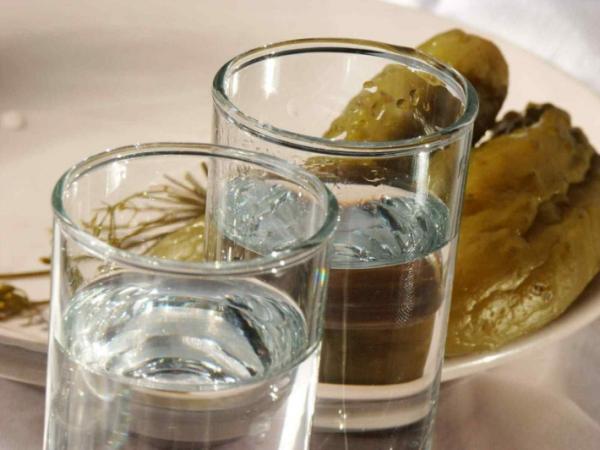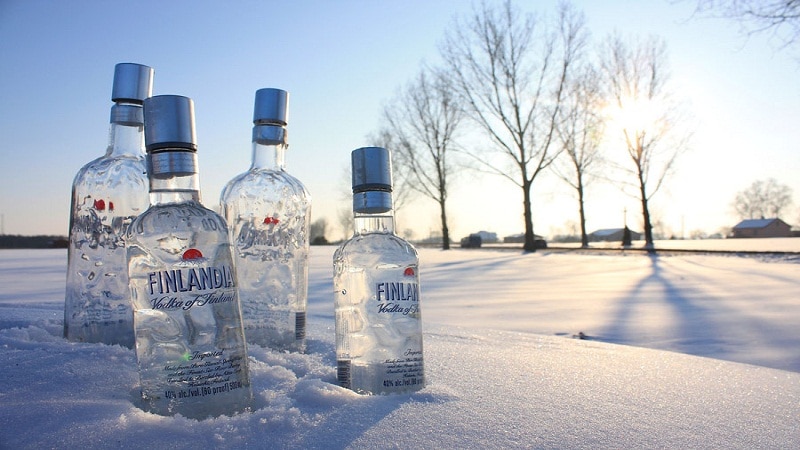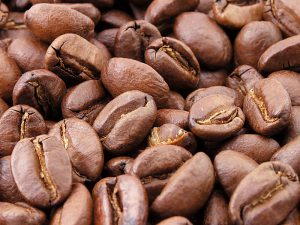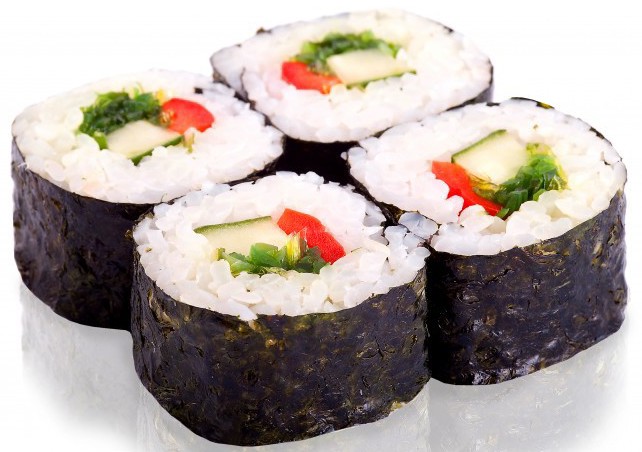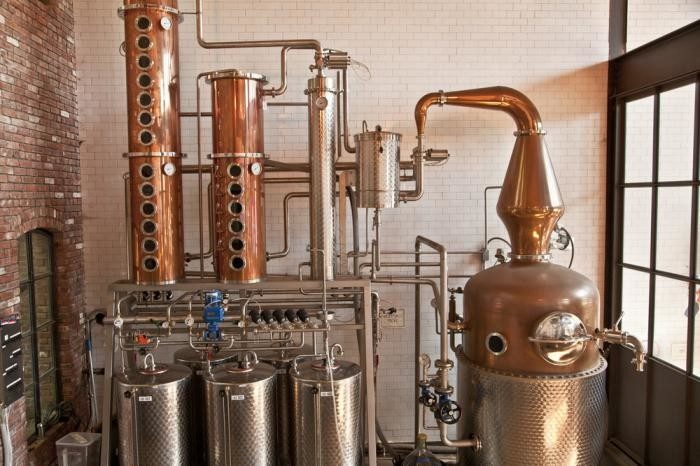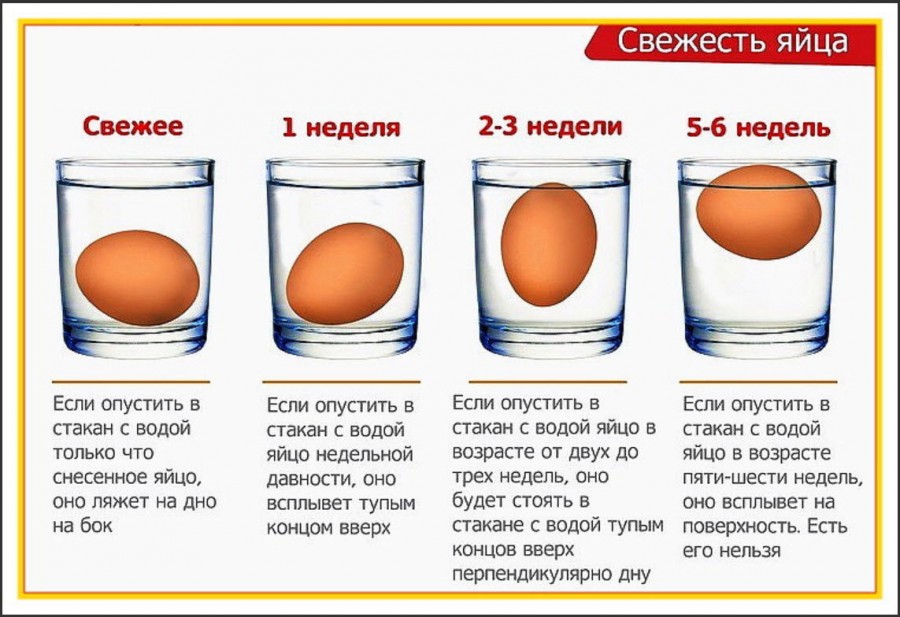How to protect jam in a jar from mold. Mold appeared on the jam: what to do? Is white and green mold harmful on jam? Mold on top of jam: can I eat, digest? At what temperature does mold die? How to roll up and store
Each housewife was faced with such annoyance as mold on the surface of the jam. It is a pity to throw out a whole jar, due to a few spots on the surface. Where does it come from? You may ask, and this will be a logical question. And mold is formed due to the poor quality of the original products, if mistakes were made in the process of making jam or under the wrong storage conditions.
Firstly, the jam could simply not have been cooked, secondly, the proportions were not respected and just less sugar was added than it should be, thirdly, the container in which the jam was packaged was not clean enough or simply wet. This is what concerns cooking errors, improper storage conditions could also be detrimental. Each product has its own expiration date, and jam is no exception. It even has 2 of them, the first before the opening of the banks and the second after opening.
We figured out where the mold comes from jam, now we need to figure out what to do if jam is moldy, there are some tips for this case. The first is the simplest, but not the best way to just throw it away without any pity. But this is not always the way out, especially if your favorite jam or more than one jar of your stocks is moldy. The second method will be more suitable; you just need to remove the top layer of jam along with the mold, forgetting about this annoyance, as usual to use jam, for more satisfaction, pour the jam into a clean container.
The third method can be used if there is a lot of mold, or you were not able to carefully collect it and its small particles fell deep into the whole jam, or if you are not sure that you could collect everything, then for greater safety it can be digested, while adding more sugar. If there are whole berries in the jam, then they must be separated from the syrup, boil the syrup, then add the previously pulled berries and boil for another five to ten minutes. After this procedure, the bacteria in the jam will be destroyed. After that, it remains only to cool it and pour it into a clean dry container, glass jars are best for jam. But this method is only suitable for home-made jam, if it was bought in a store, then it is better to use the first, that is, throw it away.
Even tastier here:
 If you combine peaches with nuts, you can cook a delicious jam
If you combine peaches with nuts, you can cook a delicious jam
 How to make Swedish cranberry jam?
How to make Swedish cranberry jam?
 Lemon Peel Jam
Lemon Peel Jam
Is it possible to eat jam when mold appears on it?
There are times that molds appear on your favorite treat prepared for the future. Someone throws away the jam immediately, some taking off the plaque, without fear, eat it, and someone, having done the additional heat treatment, uses it to make baked goods or homemade drinks. Are these colorful circles so safe? Why are they formed and can their appearance be prevented? We will answer these questions in our article.
Why does the jam mold under the lid?
The result of a process violationThe most common cause of this trouble is a violation:
- Sweet Delicatessen Technology
- Rules for its subsequent storage
We list some of them:
- Poorly sterilized jars and lids
- Low tightness of container closure
- Undercooked berries
- Low sugar in syrup
- Using an aluminum pan when cooking
- Sudden temperature changes in storage
- Too damp room during long-term storage
The main reason for the formation of mold is the appearance of condensation during the hot closing of the sweet workpiece.
The jam is moldy on top: what to do, can it be digested?

 Do not waste time on a spoiled product
Do not waste time on a spoiled product First of all, remove the thin moldy layer.
- In the absence of a specific smell and taste of mold, we choose one of the options:
- We transfer it to a container or plastic bag, send it to the freezer. A negative temperature kills fungal spores. After defrosting, jam can be eaten.
- Apply heat treatment. To do this, boil the jam for 10 minutes, with the addition of 200 g of sugar per glass of jam
- Such manipulations are effective if the moldy coating is not deeper than 2 cm.
The presence of a characteristic smell of mold indicates a deep penetration of fungal spores, such jam should not be digested and frozen. You can’t eat it - it can be harmful to your health.
At what temperature does mold die?


- Mold fungi die at temperatures over one hundred degrees.
Is it possible to eat jam if mold is on top?

 Microorganism harmful to the human body
Microorganism harmful to the human body If you remove the top layer of mold and boil the jam, the spores of the mushrooms will die from the heat. But the toxins produced by them do not die from either high or low temperature. Since the main harm to the body is not caused by the fungi themselves, but by toxins, it is not recommended to eat such jam. Get rid of him without pity.
Is white and green mold harmful on jam?

 be careful
be careful A thousand varieties of the smallest mushrooms, each of which has individual properties, is a multi-colored film called mold. Each of its types affects the human body in different ways. For example, thanks to Penicillium notatum, the first antibiotic, penicillin, was developed. This wonderful tool has saved more than one human life. But in the bulk, the fungus produces toxins harmful to health.
White and green plaque can contribute to a serious illness. It destroys the body imperceptibly, like radiation.
- Reproductive Impairment
- Decreased immunity
- Violation of the integrity of the walls of the vascular system
- Complications of existing liver disease
- Especially exposed to these toxins:
- People with reduced immunity
- Older men and women
- Small children
How to roll up and store jam so that there is no mold?

 Use old methods of blockage: with a freshly washed cloth
Use old methods of blockage: with a freshly washed cloth - Cool the product before rolling.
Remember: condensation is the main cause of mold.
- Use only sterilized, clean dishes and covers.
- An excellent recipe for corking is an old recipe with a waxed clean rag or parchment paper. Cover a jar with a piece of the selected material, tie it up with a thick thread. A jam so closed will breathe and will never be moldy.
- Avoid sudden changes in temperature during storage.
- Store the workpiece in a cool but not wet place.
- In a filled jar, put a paper circle soaked in vodka or alcohol - this is to protect the jam from mold, when in a wet basement.
So, making conclusions, it becomes clear that even with the most beloved and most delicious jam it is better to part with mold. And in order not to be disappointed by opening a jar with a delicacy coated with plaque, follow the tips in the article on corking and storing preserves from jam.
Video: How to get rid of mold in jam?
I went in and read the OLD recipes for making homemade jam. The answer to your question is clear: I and you and all modern housewives violate the cooking technology. My mother cooked cherry jam in a 2-bucket bowl for 5-6 hours, and I all 5 minutes from and the result.
Note. One pound is equal to 400 grams, one spool - 4.26 grams, one damask - 1.23 liters.
General rules.
For jam, you need to have a copper, not tinned basin (the color deteriorates in tin dishes). Berries with syrup should not fill the bowl for more than half to make it easier to shake the bowl from time to time. Berries should lie in syrup freely and not crush each other. Sugar to take refined sugar; boil in sugar - the apparent savings, because the sand should be taken 1.5-2 times more by weight, since unrefined parts boil away, there are less sugar parts and therefore the jam can oxidize. If the jam is cooked from sand, then the foam should be removed, but if it is refined, then the foam itself will disappear as the jam is boiled. To collect the foam, it is necessary to circle the basin by the handle, shaking it a little, and remove it by folding it to the middle, with the outside of the spoon (sticking).
Jam can be cooked in three ways:
1) put the berries in a densely boiled syrup, close to caramel.
2) Put the berries in the freshly blossomed syrup, boiling no more than once.
3) Cook directly with sugar without water. The first and last methods are good for weak berries, easily digestible, and the second - for berries and fleshy fruits.
According to the first method: pour 1 cup of water for every pound of sugar, put the bowl on a strong fire and boil the syrup so thickly that, lowering the wand into it and dipping it immediately in cold water, the syrup would turn into caramel and would not bother its teeth. Try more often, because from one extra boil it can burn and turn yellow, and the syrup must be white. Put the berries in the ready-made syrup and let it boil 2 times, no more, over high heat, then put the bowl in a light fire, on which it is cooked to the desired density.
In the second way: pour 1 cup of water for every pound of sugar. On high heat, let it boil and lay the berries. How to boil 1 time with berries, remove from high heat and lightly cook, - from time to time, removing the bowl, both for collecting foam and for the jam to rest. This method is the surest; with it, the berries are well saturated and boiled, ripen simultaneously with the syrup.
According to the third method: put in a bowl a row of berries, a row of finely crushed sugar, again a row of berries and again sugar, etc. Put on a strong fire so that the berries immediately give the juice, and as soon as the juice covers the berries, remove from heat and give relax. - After that, cook over low heat to the desired density. This method is good and quick, but if the sugar burns, the color and aroma of the jam will suffer.
Readiness of the syrup is recognized as follows: 1) if boiling syrup taken on a spoon will merge from its sides into two trickles, then it is ready, if to one, then boil again; 2) if you cool a little syrup in a spoon on ice, then the finished syrup should drip in the form of a large drop, after which the rest of the syrup should not even reach into the string; 3) if you tilt a bowl of jam and draw a line along the open bottom with a spoon and the line does not merge, then the jam is definitely ready.
Jam can oxidize from insufficient sugar or from undercooked berries (or fruits). This jam gets a wine smell and berries with foam rise up. To correct this trouble, you need to take 1/2 pound of sugar for each pound of jam. Dissolve sugar in water (1 glass of water per 1 pound of sugar), let it boil 1 time, put jam in it, and cook with it until the syrup has the proper density and the foam stops appearing. It is impossible to completely fix sour jam.
Jam can be sugared if sugar is laid or jam is digested and the syrup is too thick. Such jam in a cold place is more likely to be sugared. To fix it, pour boiling water (about 5 pounds a tea cup) and put in a warm oven overnight. If not all the sugar has been sold, then add more boiling water and put it in the oven again.
Cooked jam should be poured into a wide porcelain bowl (but by no means leave it in a bowl) and only after 24 hours, making sure of the quality of the jam, pour into jars. If the syrup turns out to be liquid, then carefully drain from the berries into a bowl and add.
Berries for jam should be collected in dry weather and cook, if possible, immediately.
It is better to keep jam in the summer in a cool place, taking care that it does not undergo sudden changes in temperature and does not stand in a damp place. Put the jar to the top, cover with a circle of paper moistened with vodka or rum, which protects the jam from mold if it is standing in a damp room. I know from experience that well-cooked jam is stored in open and closed cabinets, and in a warm and cold room, and badly cooked jam will go bad everywhere, and, therefore, the most important thing is to cook with patience and attention.
It is difficult to imagine a Russian summer resident who does not make blanks for the winter. We can say that canning is “in our blood”. One of the most popular preparations is jam - strawberry, raspberry, cherry, currant, etc.
The fact is that a single crop is usually harvested in just 3-4 weeks (with the exception of repair varieties of strawberries, raspberries). Therefore, it is problematic to keep its costs fresh. However, the collected berries, fruits, greens and vegetables can be frozen, dried or canned.
Often on the surface of homemade blanks, especially for sweet jam, mold appears directly under the lid. Sometimes it’s not even very clear why some banks are affected by mold, if neighboring ones are without it. In some cases, a whole batch of jam or a significant part of it may suffer from this scourge.
Many summer residents remove moldy spots from the jar and continue to use jam as food, others utilize such contents.
Mold damage
In fact, technologists and scientists have long given an unambiguous answer - most moldy products cannot be eaten. The fact is that the waste products of fungi are toxic and can be very toxic to the human body. Children, especially preschoolers, cannot be served such jam for sure.
There is truth and useful mold, which is obtained in special conditions. This is even specially cultivated on some varieties of cheese and a number of other products.
By the way, the famous penicillin, which once saved many soldiers from World War II from severe wounds, is also a moldy fungus.
If surface mold is removed, the one that penetrates the product will remain. Even to the taste of such an externally clean jam, you will realize that it is already moldy.
In a child or an adult who has health problems, after eating moldy jam, intoxication and severe poisoning can be observed. With the systematic use of moldy foods, it can eventually get to liver cancer.
Causes of mold on jam
As a rule, a number of violations lead to the appearance of mold during the creation of jam and its subsequent storage:
- Poor sterilization of cans and lids.
- Leaky cover closure.
- Cooking jam was not completed. Sometimes this can turn out from seemingly good intentions - to preserve as many vitamins as possible in the jam, fear of excessive sugaring due to digestion.
- High humidity in the cellars and cellars, where the workpieces are stored in winter.
- Not enough sugar in the composition. He plays the role of a reliable preservative.
- Constant sudden changes in temperature in the basement can violate the tightness of the cans at the junction with the lids.
As I remember from childhood, my grandmother always put a little mustard under the covers, even with sweet jam. This was especially true for blanks covered with plastic covers. If you are afraid to spoil the taste of the product, simply spread mustard on the inside of the lid without closing or rolling.
For two hundred million years, mold has been actively propagating. It is found on food, on the walls of residential buildings, even on ice and rocket fuel.
Mold is one of the most dangerous enemies of jam
Very often, opening a jar of jam, the hostess discovers mold on top of the sweets. In this situation, you can do different things. Someone gets rid of the product by sending it to the bin, someone removes the fungus, considering the product is quite suitable for use. What to do if jam is moldy? Is it possible to eat affected sweets or is it better to refuse? Why does mold appear in the jar?
The reasons
Why does mold jam? To avoid this lesion it is necessary:
- Be sure to sterilize the lids and cans. Such actions will destroy harmful fungal formations and microorganisms.
- Close the lid tightly so that there is no air access to the product.
- Put more sugar. This bulk product acts as a preservative, which provides reliable protection against fungus.
- So that the jam is not covered with mold, you should not reduce the hour of boiling sweet food.
- Preservation is poorly stored in basements where high humidity is present.
- Preserve jam in small jars.
- Fruits that were clogged with seed, try to eat in the first year. The stone gives fermentation, and it forms mold.
Track and eliminate all the negative factors that cause fungal formations on food. Then mold in the bank will not be a problem for you.

Jam should be poured into sterilized jars and covered with lids
Dangers of mold
Some products are sold with mold - cheese. It is bred on this raw material for an individual, characteristic taste and aroma. Experts say that this type of noble mold contains a lot of useful elements that improve bowel function. Despite the positive characteristics in large quantities, such a cheese product is not recommended.
Mold, which appeared naturally in jars of jam, is quite dangerous for the human body. Since it contains a lot of fungal formations that are actively growing, turning into dangerous toxic substances. These toxins, when accumulated, can slowly but surely destroy the body.
Mold is endowed with a toxic substance called mycotoxin. Its action for the human body is simply disastrous. Initially, poison can cause mild poisoning, a little later upset stomach and intestines, then weakened immunity. Cell mutation sometimes occurs. The worst effect of the poison is slowness. Over the years, a person may not even be aware of the changes taking place in his body. This modification can have serious, serious consequences.

Mold can appear in absolutely any room, causing an unpleasant smell, allergies, various diseases, etc.
Ways to kill mold
Having taken mold jam from the basement, a person thinks about further actions. What to do with conservation? How to save the product and not get poisoned? It is worth considering several familiar actions performed by frugal hostesses and consider the consequences.
Having opened a moldy product and seeing a fungal formation, a person carefully removes mold from the surface. If the jam has not changed the taste, then the sweetness is suitable for use. But do not forget that such food can lead to poisoning, albeit not serious. The risk is minimal, but still exists!
If the mold is removed from the jam, and the jar is put in the refrigerator for long-term storage, the result will be the same: the fungal formation will soon appear again. Such jam is strictly prohibited, since in addition to the specific smell, the product becomes toxic.
Destroy the mold on your favorite jam using boiling. This method is able to destroy all harmful microorganisms and prevent the further spread of fungal formation. When boiling a sweet dessert, the destruction of toxic substances is guaranteed. Therefore, you can eat such jam without fear for your health. In addition, products can be rolled up again and stored in the basement for two years.

Boiling is a good way against mold
When the jam is covered with mold, and the hostess decides to get rid of this product, she is guaranteed to take off all responsibility for her health and her family from her shoulders. Such actions can cause mental discomfort for the time spent and energy for conservation, but health is more important!
The use of jam with a fungal formation is undesirable for several reasons. When mold appears, an unpleasant, specific taste is felt, allergic reactions are observed in hypersensitive people and poisoning.
It is interesting to know: many scientists come to the conclusion that the effect on the human body of a moldy product is significantly exaggerated. They are sure that the chance of poisoning is negligible. Especially if the sweet fruit has been boiled repeatedly.
If, after boiling, harmful bacteria remain in the product, they will cause light food poisoning. Then the person will observe: loss of appetite, malaise, general weakness, headache or dizziness, sometimes vomiting reflexes. However, in a day all unpleasant symptoms will disappear, and the threat to the body will be exhausted. As soon as microorganisms begin elimination, signs of poisoning will be in the past.
Jam mold, what to do? The use of this product is undesirable due to the risk of poisoning. But if mold has covered an insignificant part of the product, then there is no need to sound the alarm. Sweetness can be boiled and eaten. In this case, the percentage of poisoning is miserable. But you must remember that health comes first. Why take the risk? It is better to get rid of moldy preservation and not think about the consequences.
